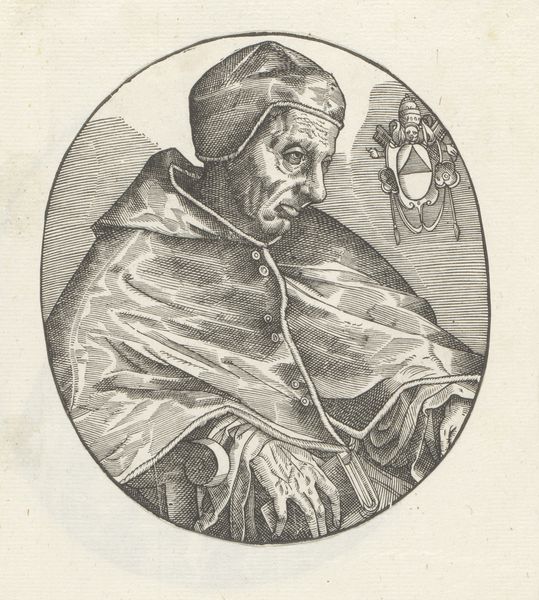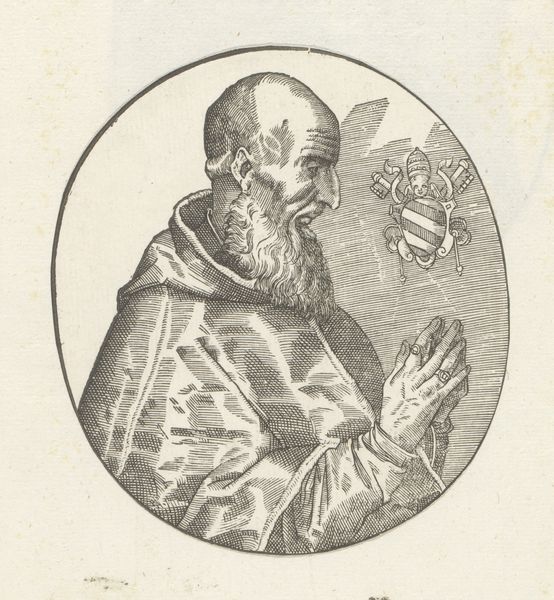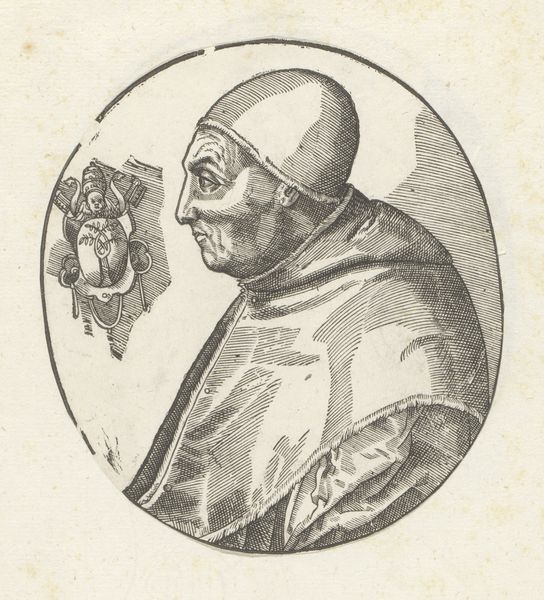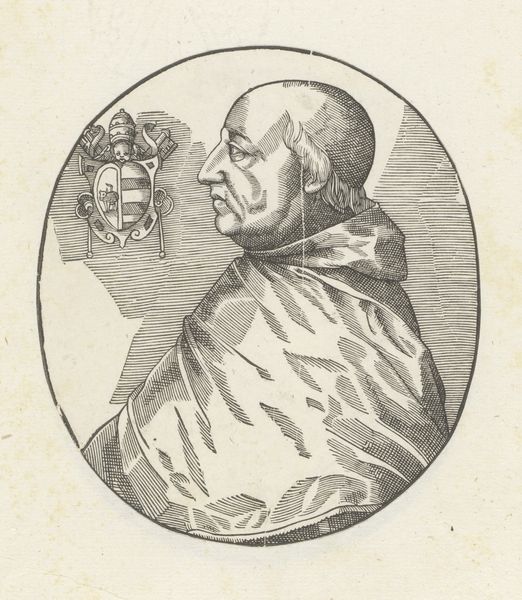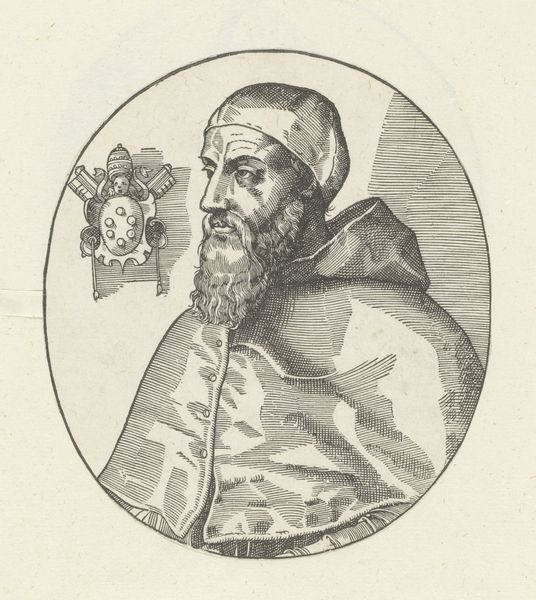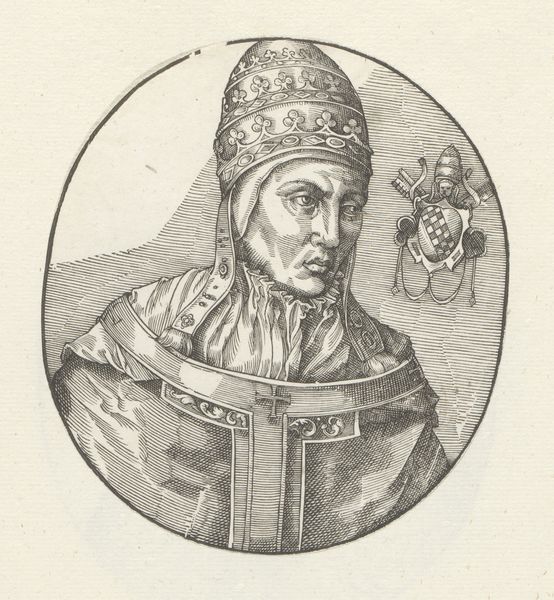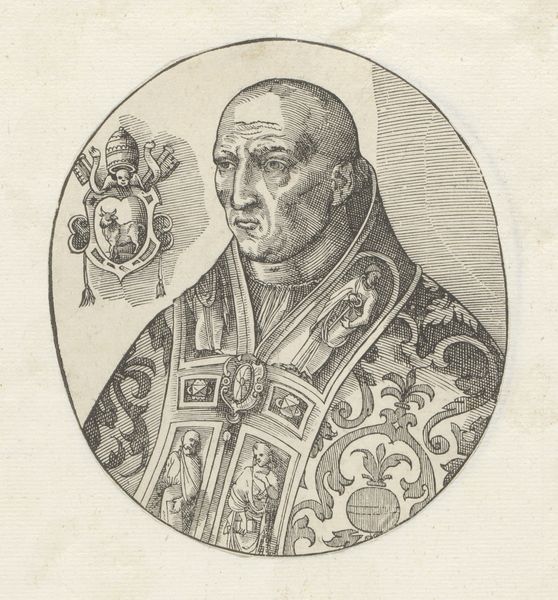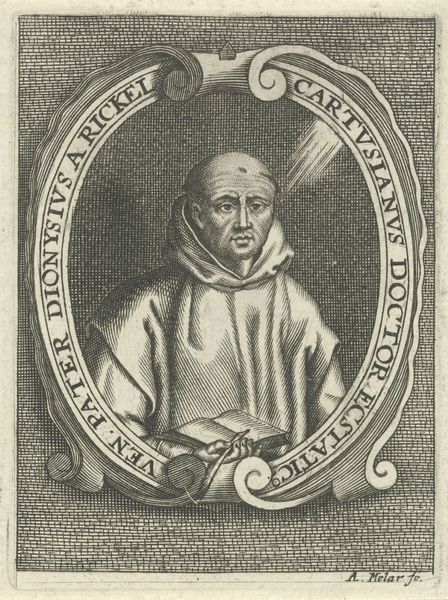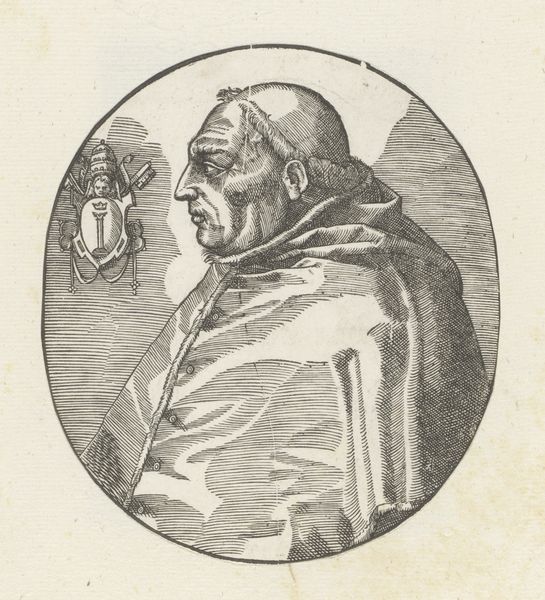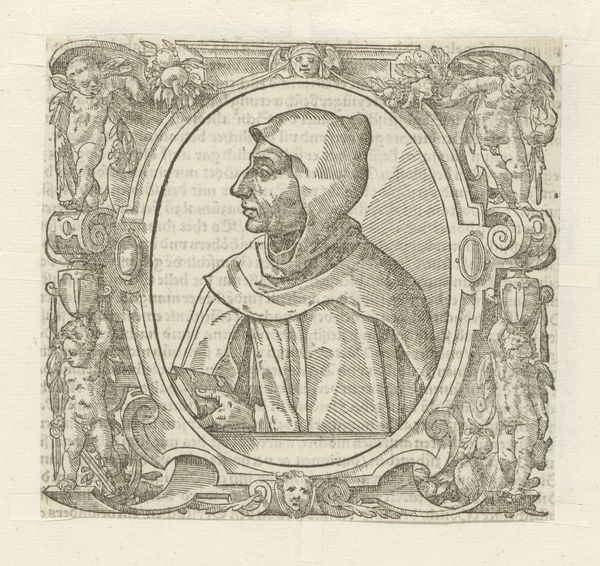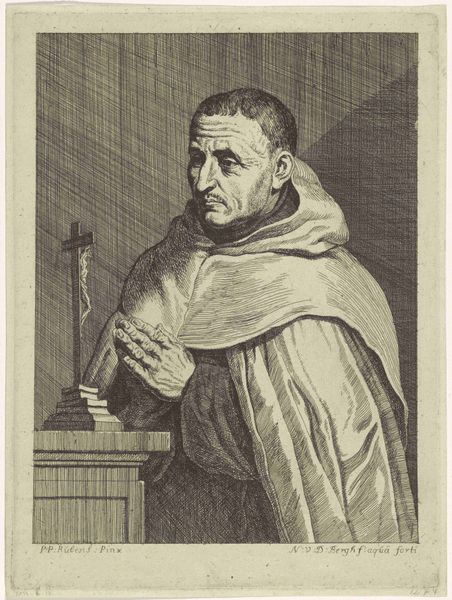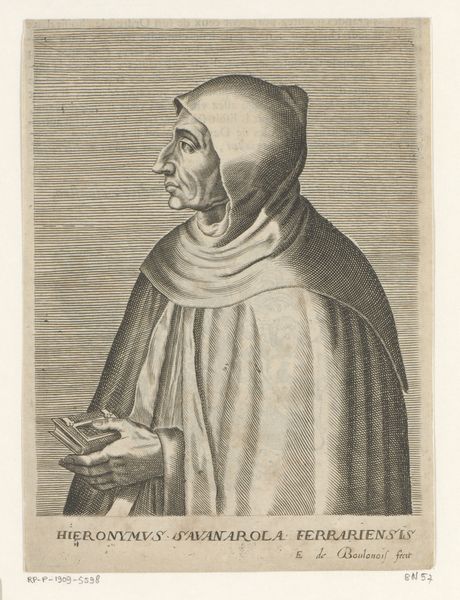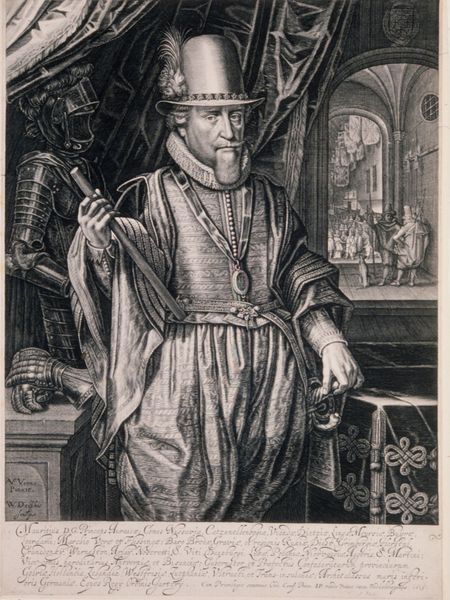
print, engraving
#
portrait
# print
#
old engraving style
#
11_renaissance
#
history-painting
#
italian-renaissance
#
engraving
Dimensions: height 126 mm, width 111 mm
Copyright: Rijks Museum: Open Domain
Curator: Let's talk about this engraving: "Portret van paus Innocentius VIII," likely created between 1549 and 1573 by an anonymous artist during the Italian Renaissance. It's a compelling portrait. What’s your immediate take? Editor: Grave. Utterly grave. The texture feels almost like it’s etched directly onto my own bones, and his gaze doesn't help. This figure projects intense, considered power. Curator: Indeed. Look closely at his hands; the ring he wears hints at earthly authority, even as his raised fingers seem almost…gesturing towards absolution? Renaissance art loved symbolism, and here, that tension sings. Editor: It’s fascinating how a relatively simple engraving achieves such weight. The textures created with those tiny lines--they convey not just fabric and skin, but the weight of tradition, the accumulation of history embedded in every fold of his cloak. And that tiny heraldic shield floating behind him! Curator: It is curious that the engraver chooses to add this heraldic symbol behind him. Editor: Precisely. Those shields, those coats of arms, become condensed narratives—miniature monuments to lineages and legacies, aspirations of families through history, each animal or object has such symbolic weight. This portrait utilizes it so elegantly. Curator: And there’s a starkness, wouldn't you say? Very little background detail, directing all our attention to Innocentius’s character, which is probably the intent behind most Renaissance portraits. The line work around the nose, so pronounced. The intensity is almost clinical. Editor: Perhaps "clinical" gets it just right. Stripped back, allowing a deep observation of power, fallibility... mortality. Even centuries later, we grapple with these same images, the same human themes that the image carries, echoing, continuing in cultural memory. Curator: Well, what better conversation can you expect to have from a Renaissance era Italian portrait? It's thought-provoking to contemplate how this "old engraving style" translates into contemporary perceptions and to continue this conversation today. Editor: I'm always mesmerized by how symbols work on the mind over such vast scales. I leave the image of Innocentius today contemplating that very point.
Comments
No comments
Be the first to comment and join the conversation on the ultimate creative platform.
